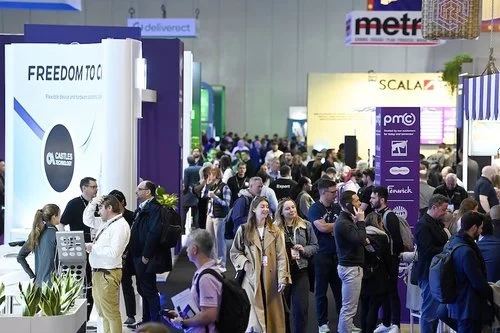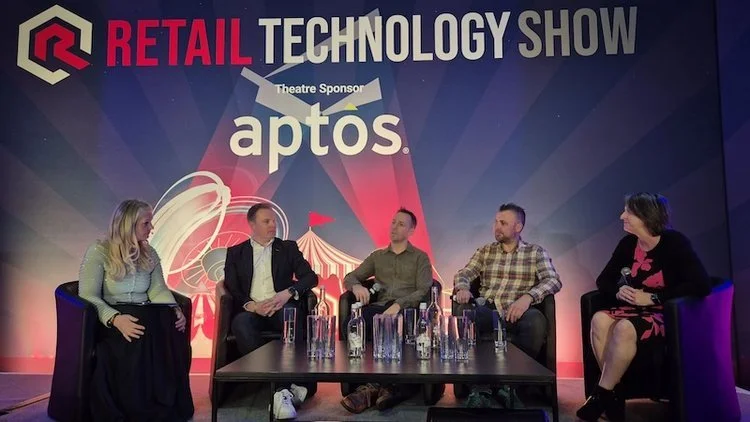What happens after closing time? AI security that doesn’t sleep
When the last customer leaves and the lights go out, most retail stores enter a window of vulnerability that lasts all night. This after hours gap is when traditional security methods start to show their cracks.
Alarm systems? They often trigger false positives and drain police resources. Security guards? They're only human - fatigue, distraction, and inconsistency can creep in fast. I used to assume the mere presence of a camera or a nightly patrol was enough. But reality has proven otherwise.
Retail theft, vandalism, and even coordinated break-ins have become increasingly sophisticated. These aren't random acts - they're often planned, timed, and specifically targeted at known weaknesses in legacy systems. That reality calls for a smarter, sharper, always-on approach. Responding to changing threats in retail means designing defenses for premeditated, data-driven attacks—not just opportunistic theft
Autonomous Sentinels: Smarter, Cheaper, Faster
Enter AI driven surveillance systems. These aren't just upgraded motion sensors - they're active defenders. We're talking about smart cameras that detect movement, analyse behaviour in real-time, and even issue verbal warnings when suspicious activity is detected. Unlike traditional systems that just record, these devices engage.
Many of these solutions operate with edge computing - they don't wait for data to go to the cloud. Instead, they assess threats right there, on the spot, drastically cutting reaction times. What's more, they learn. The more data they observe, the sharper they get at distinguishing between a raccoon and a real threat.
Edge computing in retail enables faster data processing, enhancing the responsiveness of AI driven security systems.they don't wait for data to go to the cloud. Instead, they assess threats right there, on the spot, drastically cutting reaction times. What's more, they learn. The more data they observe, the sharper they get at distinguishing between a raccoon and a real threat. As AI video goes mainstream in stores, real-time analysis and audio response are quickly becoming standard, not futuristic.
The Numbers Don’t Lie
Retailers report significant reductions in incidents after switching to AI surveillance. Some have seen double-digit drops in shrinkage and property damage. Insurance premiums have responded too, with lower risk profiles leading to cost savings.
For stores operating on thin margins, that change can be a game-changer. When a single incident could wipe out monthly profit, systems that prevent loss at the source become more than tools - they’re essential infrastructure. Systems like Trigo’s real-time AI loss prevention offer a glimpse into how surveillance can move from passive observation to active incident control.
Beyond Detection: Event Logging and Evidence Trails
AI systems also offer deeper forensics. High resolution video, event timestamps, object tracking, and voice interaction logs create digital records that help in insurance claims, police investigations, and even internal audits. This isn't just surveillance - it's a trail of accountability.
From Watchdogs to Gatekeepers
Modern AI systems aren’t just passive eyes. They act. Some platforms feature speakers that issue real-time audio commands, challenging intruders or guiding them away. Others can alert law enforcement with verified threats, drastically reducing false calls.
This proactive engagement creates a new kind of presence - a digital gatekeeper that doesn’t blink, sleep, or miss a thing. It also adds a psychological barrier. When potential intruders hear a voice responding directly to their actions, it disrupts the script. Suddenly, they’re not alone.
That awareness can stop a crime before it starts. AI and biometrics for retail security are reshaping how stores deter crime before it starts - adding layers of intelligence to traditional deterrents.a digital gatekeeper that doesn’t blink, sleep, or miss a thing. It also adds a psychological barrier.
Psychological Impact
There's power in perceived surveillance. Just like stores have learned the value of strategic lighting and visible deterrents, AI security adds another invisible layer of mental friction. The sense that "someone's watching" now has teeth. And that deterrent factor can extend well beyond the camera’s field of view.
Tailoring Security to Store Type
AI isn’t a one-size-fits-all solution - and that’s exactly the point. What works for a high-end boutique won’t work for a 24-hour convenience store. Fortunately, these systems are modular. Retailers can scale, customise alert zones, and set behavioral thresholds specific to their needs.
For example, a shop with large glass windows in a busy downtown area might prioritise motion-based alerts with real-time audio responses. A strip mall liquor store could opt for perimeter detection and license plate recognition. AI adapts to the scenario, not the other way around.
Learning the Space
Part of what makes these systems effective is their ability to map out the retail environment. Over time, they begin to recognise patterns, peak activity zones, and even typical human flow - which makes out-of-place movement stand out like a sore thumb.
Advanced setups allow stores to define zones of interest within a single feed. The front entrance might require one behaviorial threshold, while a stockroom door demands another. Systems can monitor employee only areas, flag unusual movement patterns, and learn the difference between delivery routines and suspicious pacing.
The Quiet Partner: Peace of Mind as a Service
At the end of the day, retail isn’t just about profit - it’s about peace of mind. That’s where AI systems quietly shine. They offer a digital backbone for retailers who can’t afford to gamble on downtime, distraction, or human error.
And for those wondering how to get started with systems like these, platforms such as Deep Sentinel Home Securityare making this shift attainable and affordable. Whether it’s a single storefront or a chain of retail spaces, the technology is now mature enough to meet businesses where they are.
Just as retailers invest in customer experience, layout design, and merchandising, the same care should go into protecting those assets when the doors are locked. AI security isn’t just an upgrade. It’s insurance that thinks.
Integration Overhaul: Connecting Old and New
One of the biggest roadblocks in adopting AI security has been integration. Many retailers are already invested in older infrastructure - legacy alarm panels, analog cameras, and outdated control rooms. But integration tools are catching up.
Modern AI systems often come with middleware that can bridge the gap, pulling data from old systems while layering on new analytics. Some even retrofit analog feeds with smart overlays, giving old cameras a second life. This flexibility lowers the barrier to entry and speeds up adoption. When integrating legacy systems with new platforms, fortifying retail tech with cybersecurity becomes as critical as functionality. that can bridge the gap, pulling data from old systems while layering on new analytics.
Blending human oversight with AI isn’t just possible - it’s powerful. Security teams can focus their attention on alerts that matter, while AI filters the noise. That synergy delivers better results, less burnout, and more confidence.
Training and Staff Alignment
AI doesn’t replace security staff - it enhances them. When paired correctly, staff are freed from routine monitoring and can focus on high value tasks like incident response, customer interactions, or strategic oversight. Rather than eliminating jobs, these systems elevate roles. They shift personnel from passive watching to active decision-making.
Training programmes are evolving fast to keep up. Teams are learning how to interpret AI generated heatmaps, navigate real-time dashboards, and respond appropriately to threat escalations. Workshops now include scenario simulations, alert triage drills, and escalation protocols tailored to store layouts.
Some retailers are even creating new hybrid roles - part technician, part responder - that blend frontline knowledge with system fluency. In fact, automation's impact on retail jobs is proving more constructive than many feared—enhancing roles rather than eliminating them.
The goal is harmony, not handoff. When humans and AI operate in sync, retailers get the best of both: nuance where it matters, automation where it counts. It’s not about replacing security - it’s about redefining what it looks like to be secure.
Regulatory Readiness and Privacy Compliance
One overlooked benefit of AI security systems is their potential to assist with compliance. In an age of growing regulation around data, surveillance, and employee rights, these platforms can be configured with compliance in mind.
From GDPR safeguards to audit ready access logs, retailers can align surveillance strategy with legal expectations. In some cases, oversight bodies are stepping in to ensure fairness - for instance, the FTC investigates AI pricing to ensure consumer data isn't misused for discriminatory pricing strategies. retailers can align surveillance strategy with legal expectations.
Masking and Consent Features
Some systems offer privacy conscious features such as automated facial blurring for non-threatening subjects, or timestamped recordings with consent notices for internal uses. These tools don’t just protect the store—they protect the people inside it, too.
For example, systems can differentiate between staff and unidentified individuals, masking faces unless a security trigger is met. In some setups, video recordings include visual cues signaling when surveillance is active—building transparency directly into the monitoring process. This adds another layer of trust, especially for staff working late or in high-surveillance zones.
Retailers are also beginning to use anonymised heat mapping for foot traffic analysis, ensuring that insights about behavior don’t compromise identities. It's surveillance with sensitivity - capturing critical security data without turning customers or employees into involuntary data points. The rise of AI surveillance in stores has sparked debates over privacy and the need for regulatory oversight. for foot traffic analysis, ensuring that insights about behavior don’t compromise identities.
In short, modern AI tools understand that privacy isn’t the opposite of security - it’s part of it.
Lights Out, But Not Blind
Retail is evolving. Threats are too. But the tools to protect your store don’t need to lag behind. With AI powered security, closing time no longer has to feel like a countdown to vulnerability.
When the lights go out, protection doesn’t have to. Smart surveillance, adaptive alerts, and real-time responses make it possible to sleep well—knowing your store is wide awake.































Continue reading…